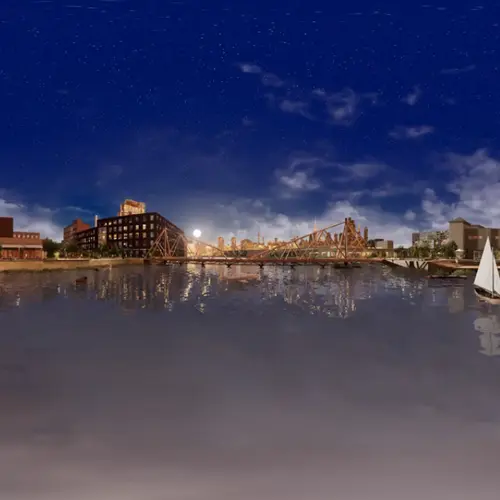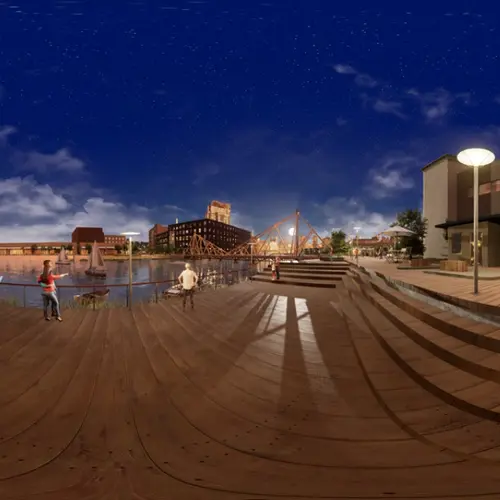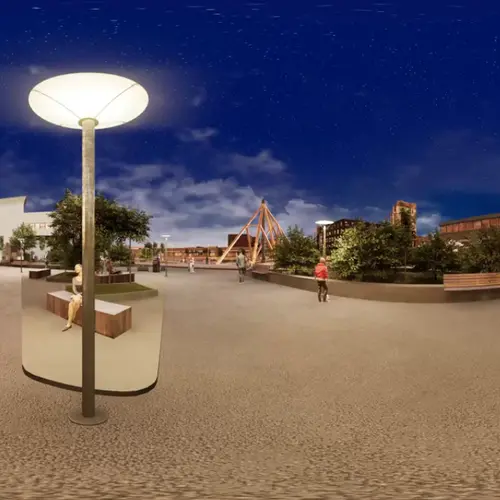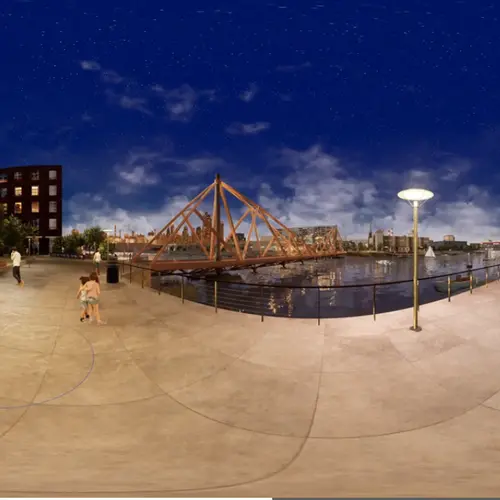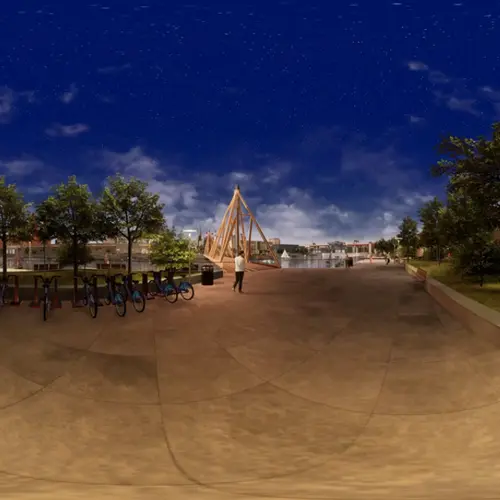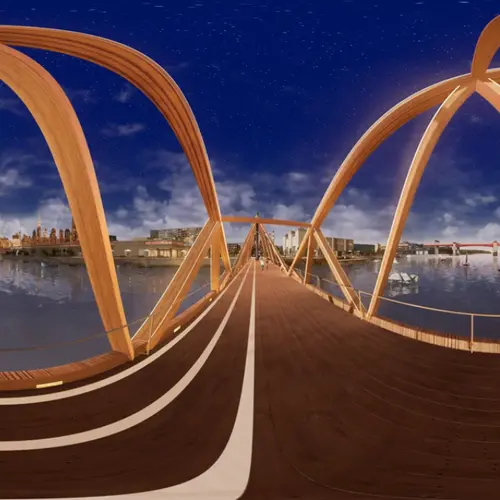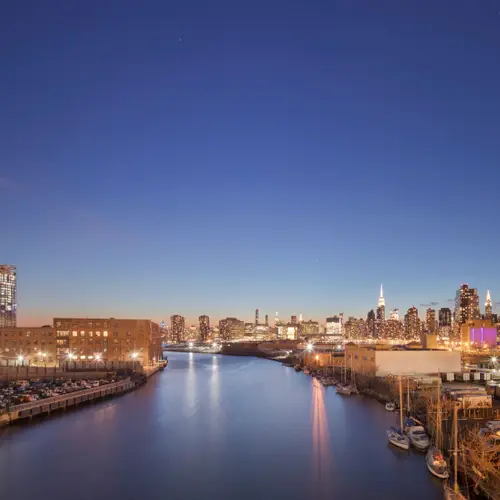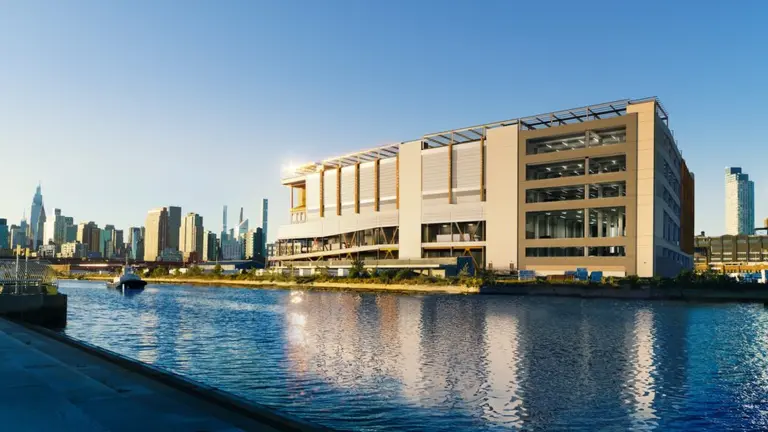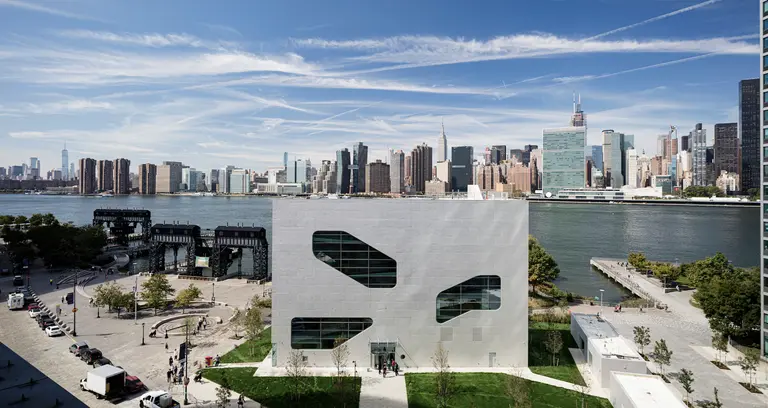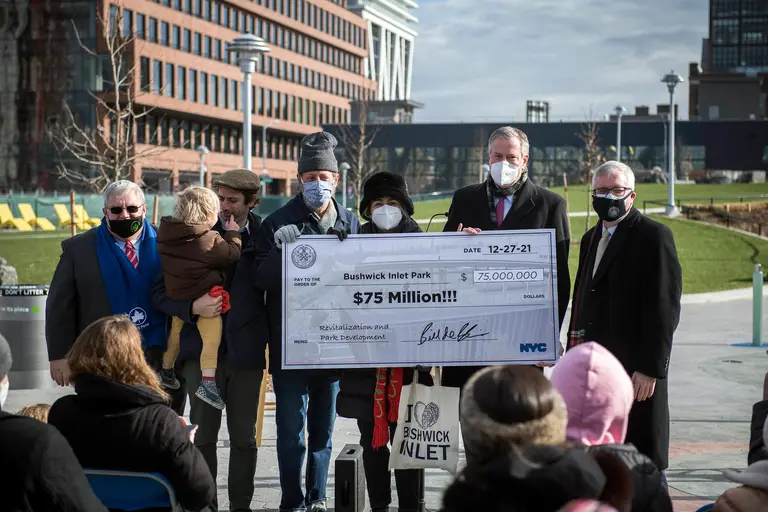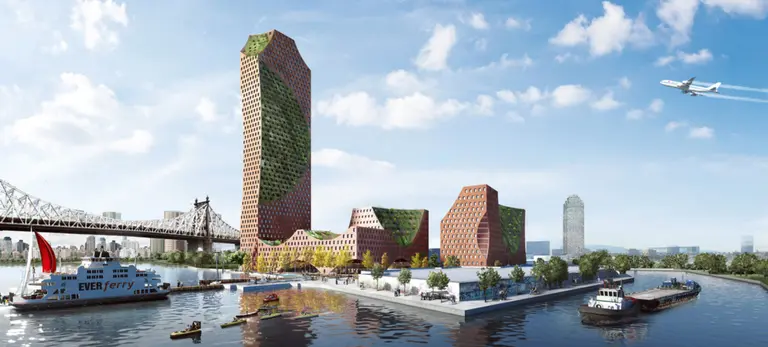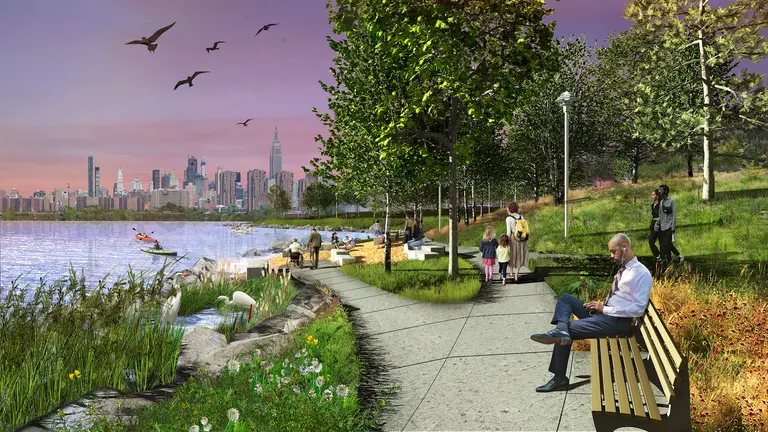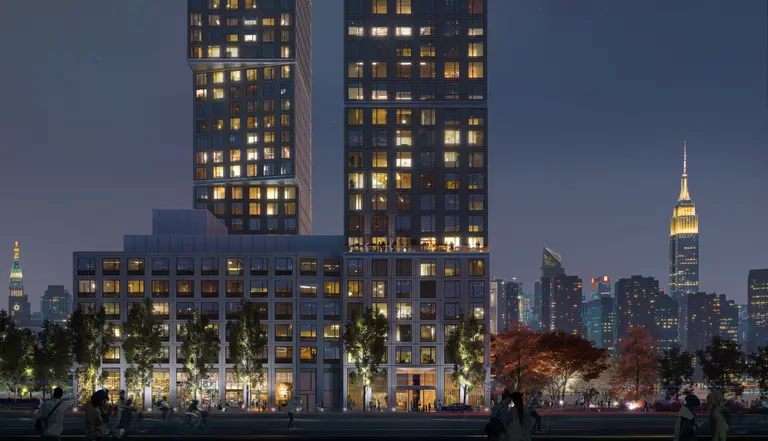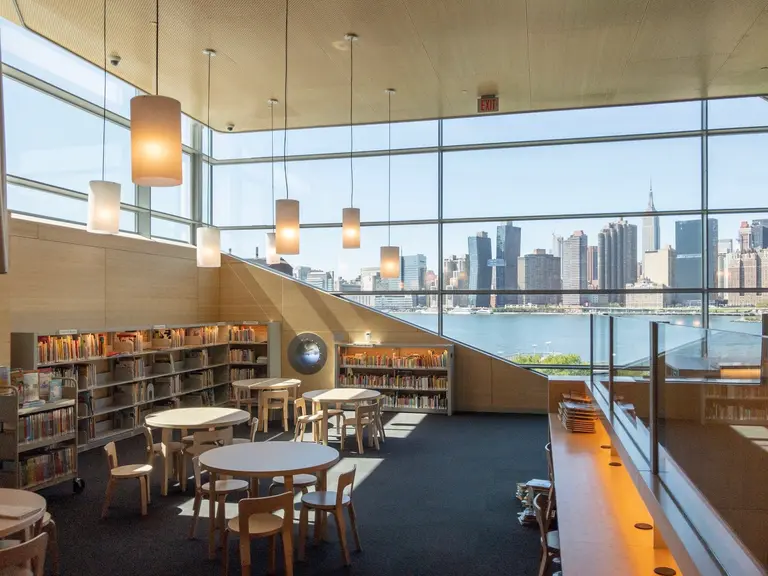Timber bridge between Greenpoint and Long Island City gets support from local politicians
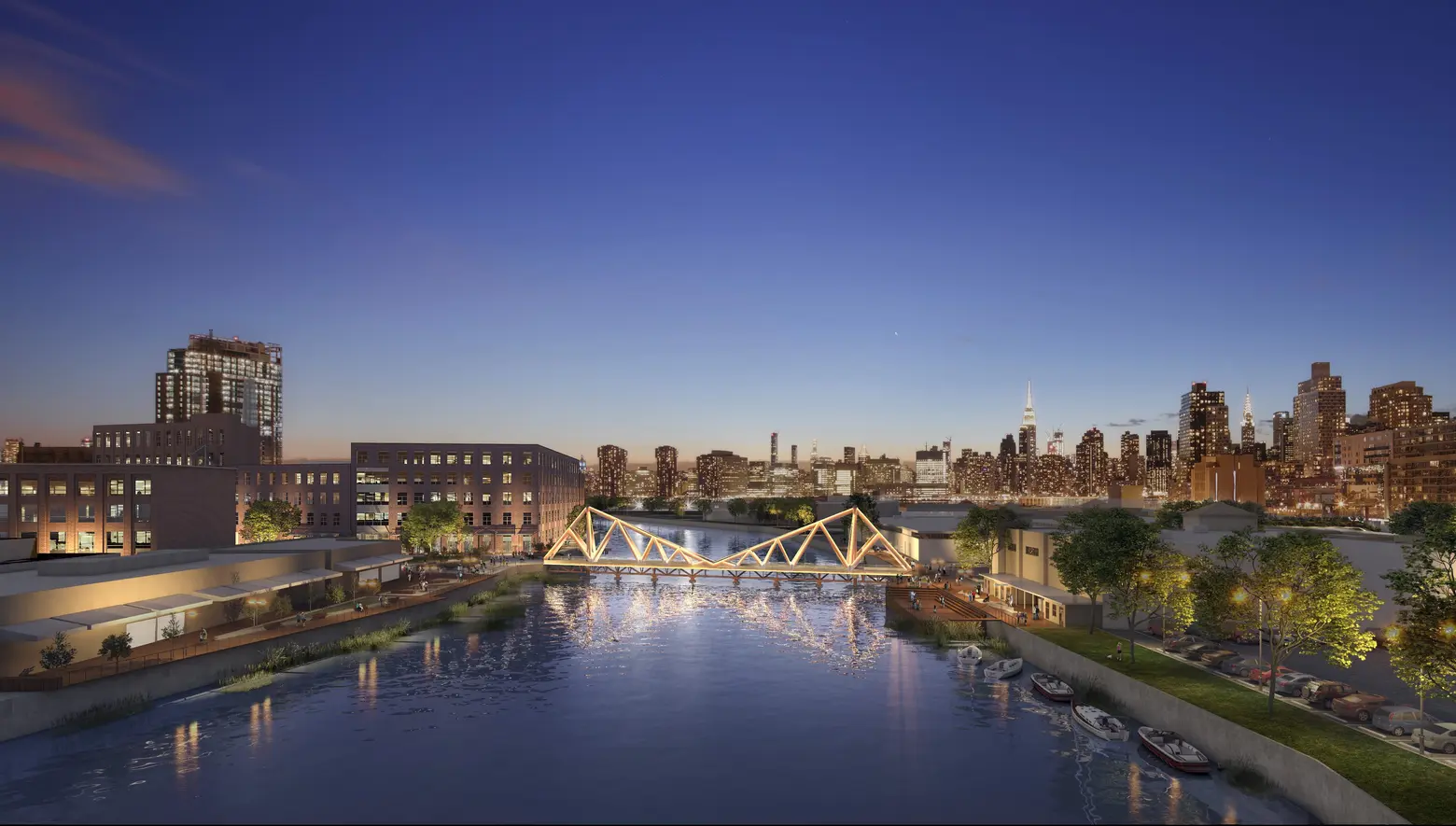
Rendering via CRÈME / Jun Aizaki Architecture and Design
6sqft reported last May on a proposal for a civic design project aimed at reconnecting the neighborhoods of Greenpoint and Long Island City. Brooklyn-based studio CRÈME‘s concept, called Timber Bridge at LongPoint Corridor, calls for constructing a floating bridge made of durable timber that would span Newtown Creek and expand past it to the LIRR rail yard in LIC. Not only would the new bridge provide greater access to transit options, but, according to the design team, Timber Bridge would give cyclists and pedestrians a safer commute than the car-jammed Pulaski Bridge. The Brooklyn Eagle reports that this grassroots initiative is now just a bit closer to becoming a reality with the creation of a nonprofit and new support from local civic leaders.
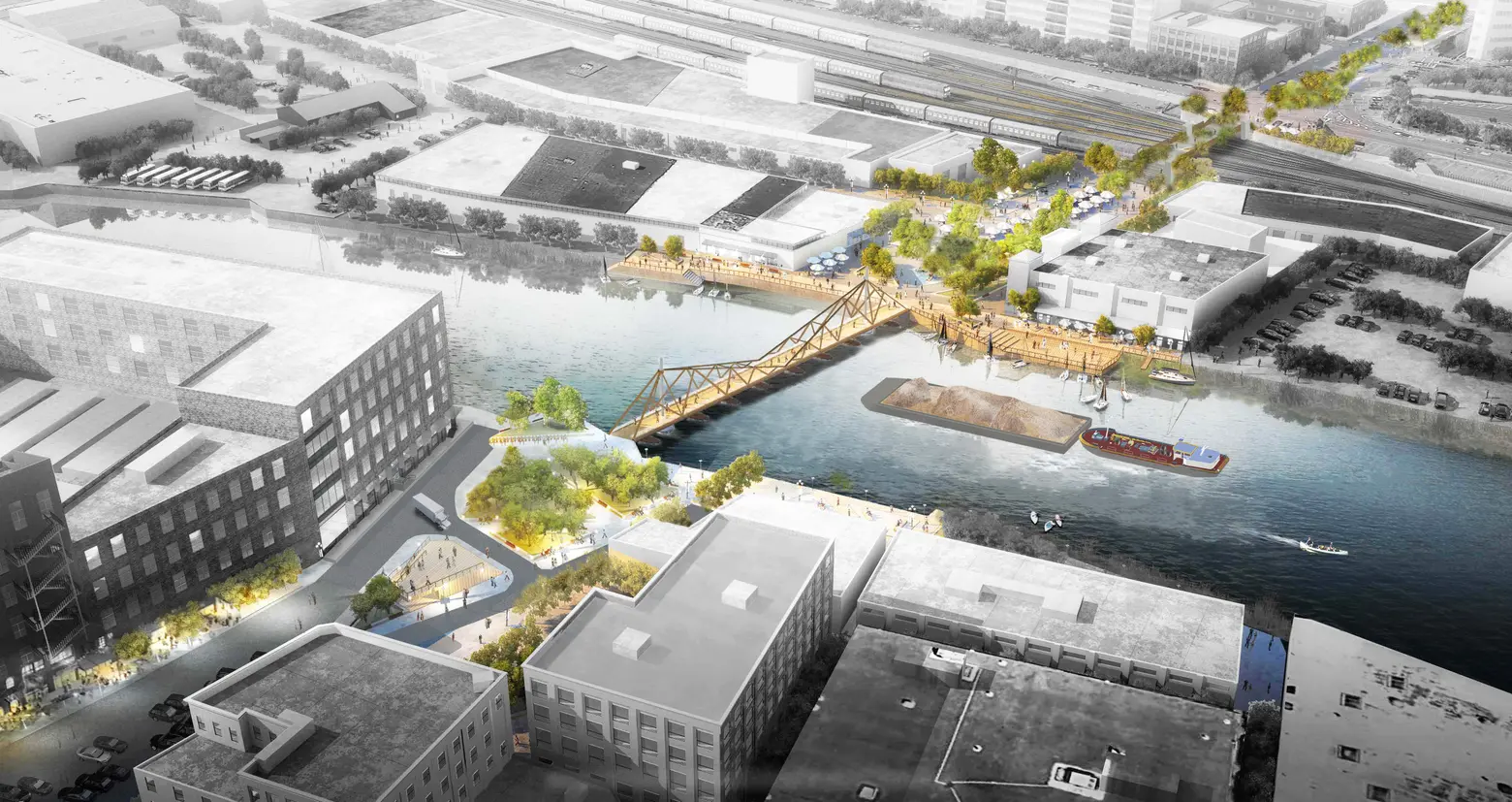
In January of this year, the organization working to make the bridge happen became a registered nonprofit, Friends of Timber Bridge, which strengthened fundraising efforts; the initiative also won the backing of two Brooklyn politicians, Assemblymember Joe Lentol and Borough President Eric Adams, who showed support for the project in a letter to the Department of Transportation: “One of my greatest priorities as Brooklyn’s borough president is to ensure that our residents have unimpeded access to public spaces and recreational oases. The floating timber bridge would provide bicycle and pedestrian connections between the two neighborhoods, while activating public space on both of their waterfronts.”
The project’s designers have estimated that the project would cost more than $32 million and take about two years to complete. Last spring CRÈME attempted to raise $50,000 to fund environmental impact and feasibility studies via a Kickstarter campaign but only pulled in $30,266. The firm is looking at funding possibilities for the bridge that include city funds and private donors–including, potentially, Amazon.

A bridge in this location is not without precedent: Constructed in 1905, the Vernon Avenue Bridge once served as a connection between Long Island City and Greenpoint via Manhattan Avenue. In 1954, after it was deemed too faulty to use, the bridge was demolished and later replaced with the Pulaski Bridge. The Pulaski serves as the only point of access between the two neighborhoods other than the subway, and, according to CRÈME, it does not have enough bike lanes.
The LongPoint Bridge, as Timber Bridge is also called, would reintroduce these two neighborhoods through its path over the creek and across the rail yard–and it would save eight minutes per trip compared to traversing the Pulaski Bridge on foot. The area surrounding the LongPoint Bridge could become a local micro-district and a natural gathering spot for weekend activities and special events.
“Our practice is defined by solutions-driven principles,” Jun Aizaki, principal of the design and architecture firm, said. “Tackling a problem this large is a first, but creating a solution with the end user in mind is only natural. Despite the difficulty of this feat, we are confident that New York City needs to rectify this problem as the neighborhoods of Long Island City and Greenpoint grow exponentially.”
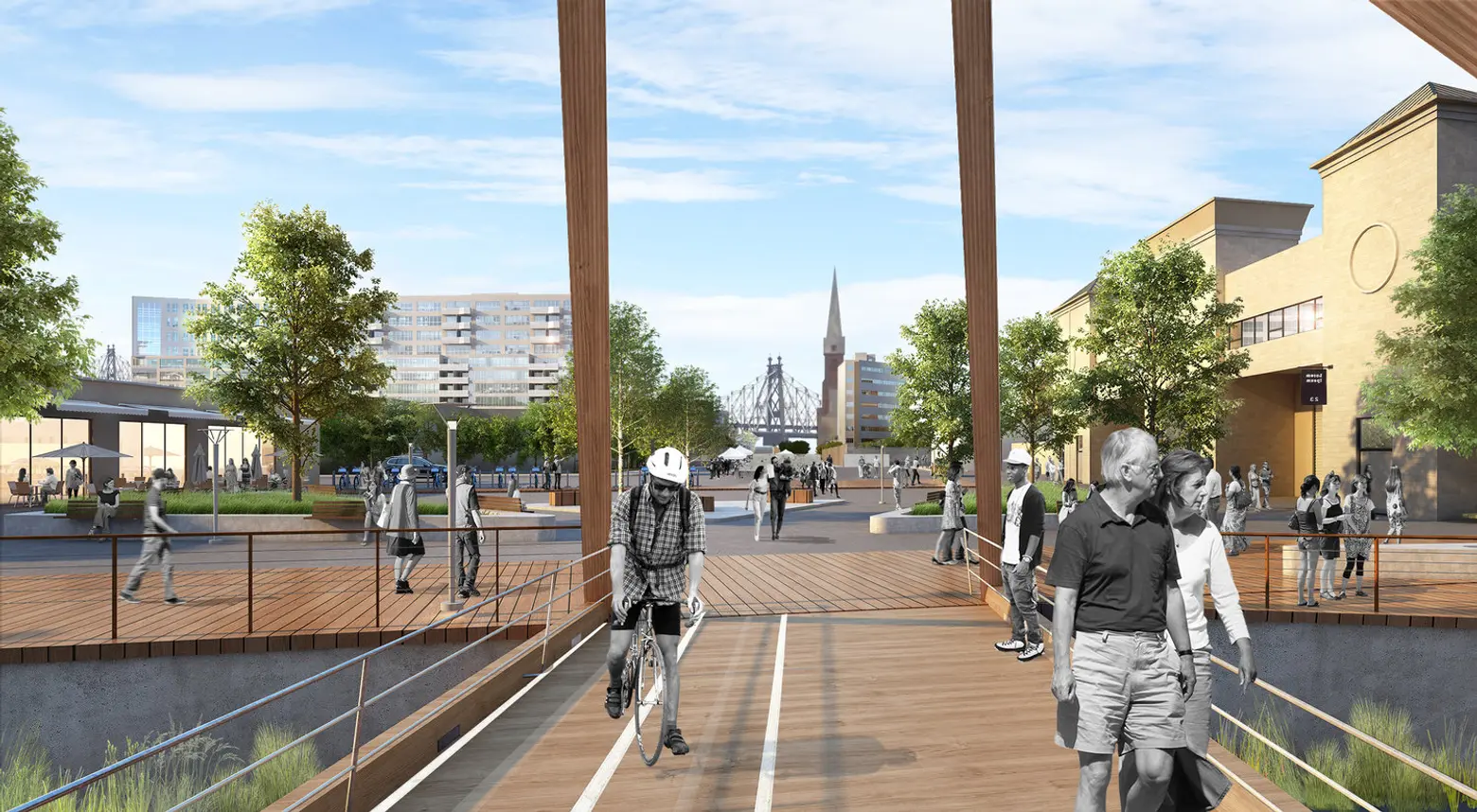
The LongPoint Corridor will continue beyond the creek and 54th Avenue in Long Island City and cross over the LIRR rail yard. The surrounding rail yard currently has many parking lots and is not “living up to its full potential,” according to the firm’s presentation. Greenpoint’s Manhattan Ave Landing currently has a small park, but the project calls for more storefront and retail opportunities to make it more enjoyable for commuters and visitors.
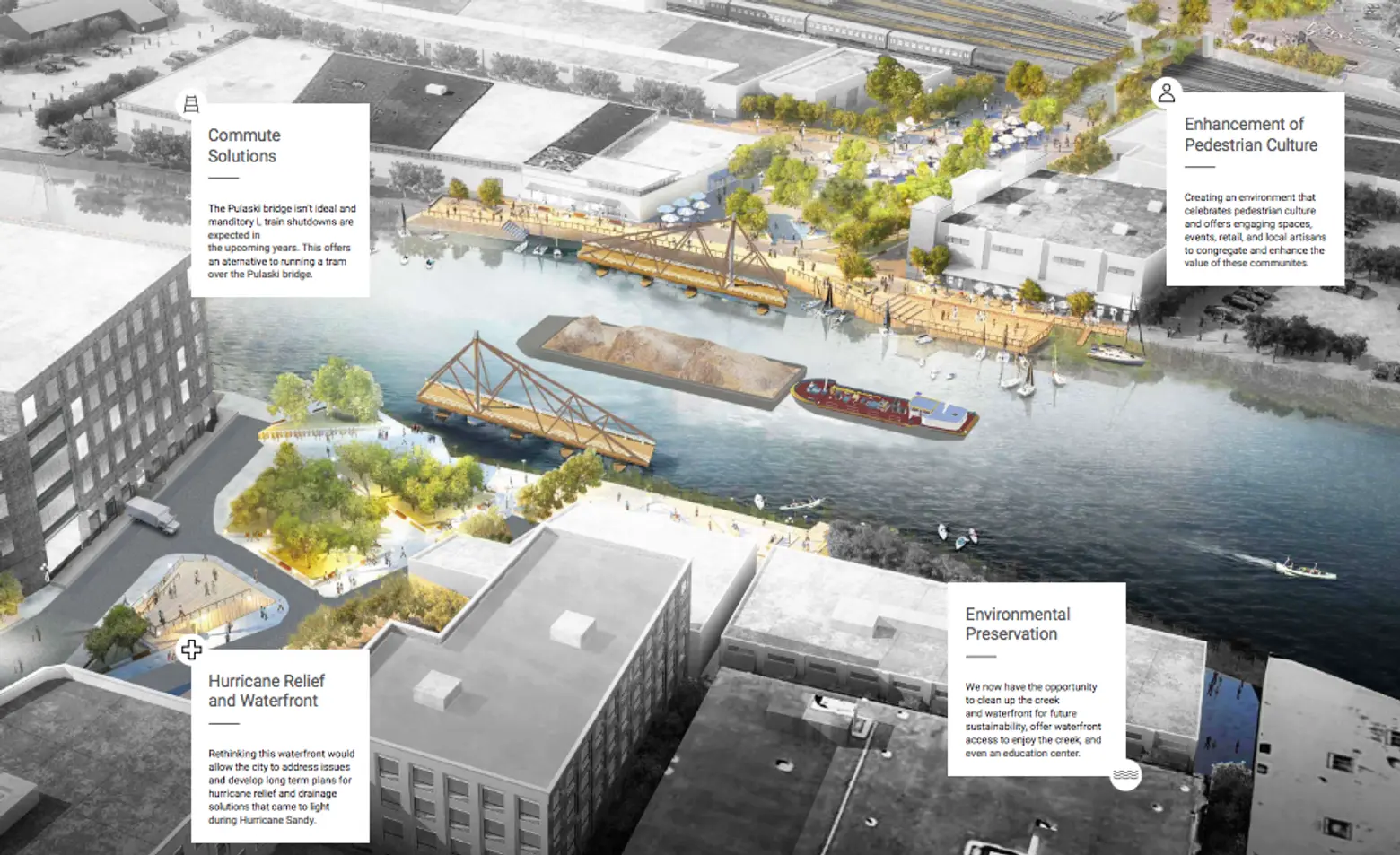
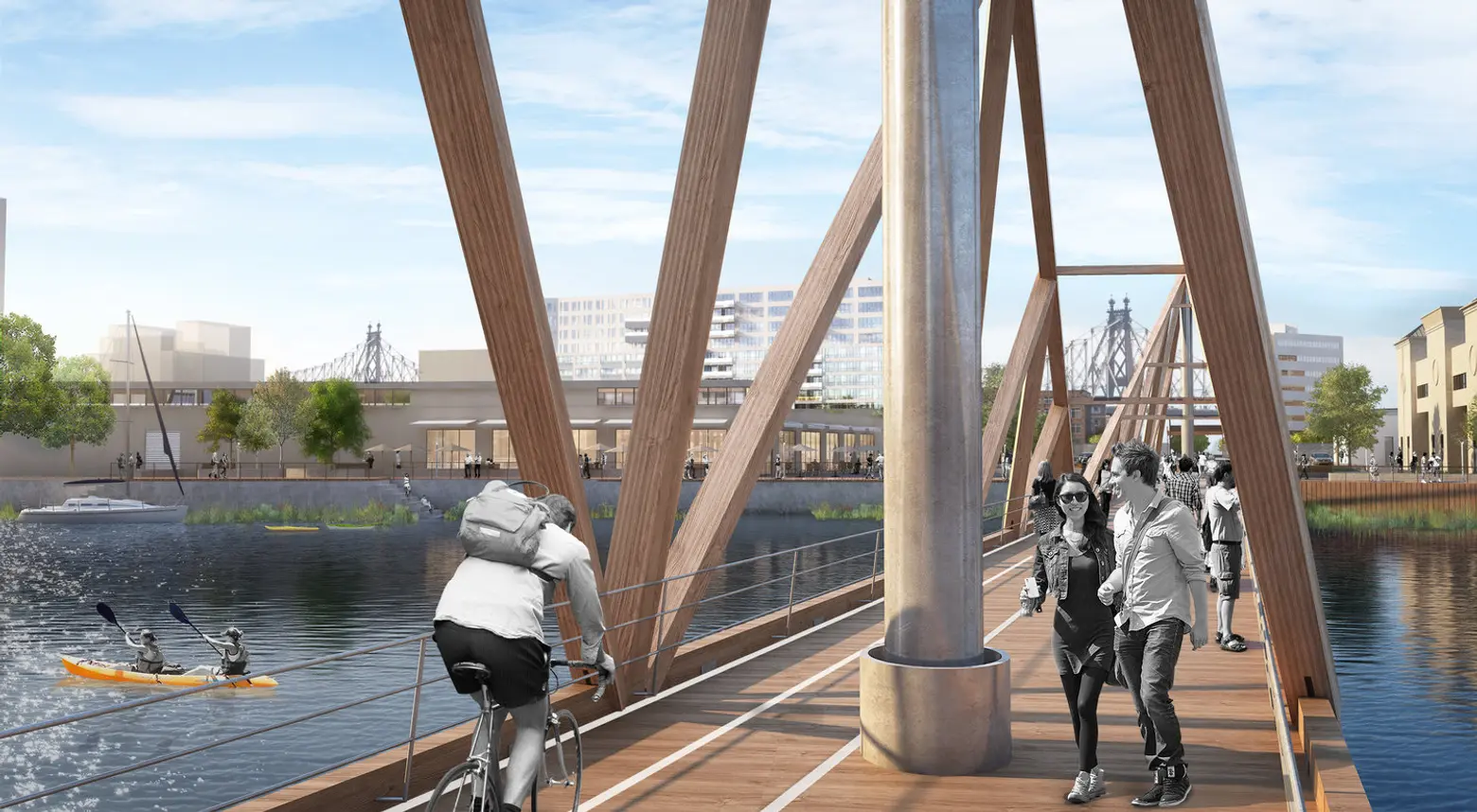
The bridge is the main focus of the LongPoint Corridor and would have swinging capability and allow for small vessels to pass under the bridge at any time without opening. The design of the bridge would be simple, cheap and quickly constructed.
Timber Bridge at LongPoint Corridor Kickstarter from CRÈME / Jun Aizaki Architecture on Vimeo
Timber Bridge would consist of a floating platform and a wood armature fixed on a pole that allows the bridge to swing open. The floating pontoon allows for the platform to rise and fall with the tides, but remain at a set height to let kayaks and row boats pass underneath.
Aizaki said, “We understand that Timber Bridge would be a lengthy process and that we cannot change the world overnight, but as architects we put ideas like this forward into the social consciousness so people will realize that there is a better way and that we have to forge new paths. New York has an obligation to its citizens to provide sound infrastructure and as Brooklyn and Long Island City grows in density, pedestrian bridges like this are a necessary solution. We stand by our design, which has received overwhelming public support. Our first step is to secure funding for a environmental, engineering and feasibility studies. CRÈME looks forward to making this project a reality for the people of Brooklyn and Queens.”
Learn more about the project here.
RELATED:
- Proposal calls for a floating pedestrian bridge to connect Greenpoint and Long Island City
- Where I Work: Jun Aizaki’s architecture and design firm CRÈME gets creative in Williamsburg
- Finalists for Park Avenue design contest propose an artificial mountain and a river for kayak commutes
- Skyscraper proposal adds affordable housing in a new vertical system between Manhattan buildings
All renderings via CRÈME / Jun Aizaki Architecture and Design
